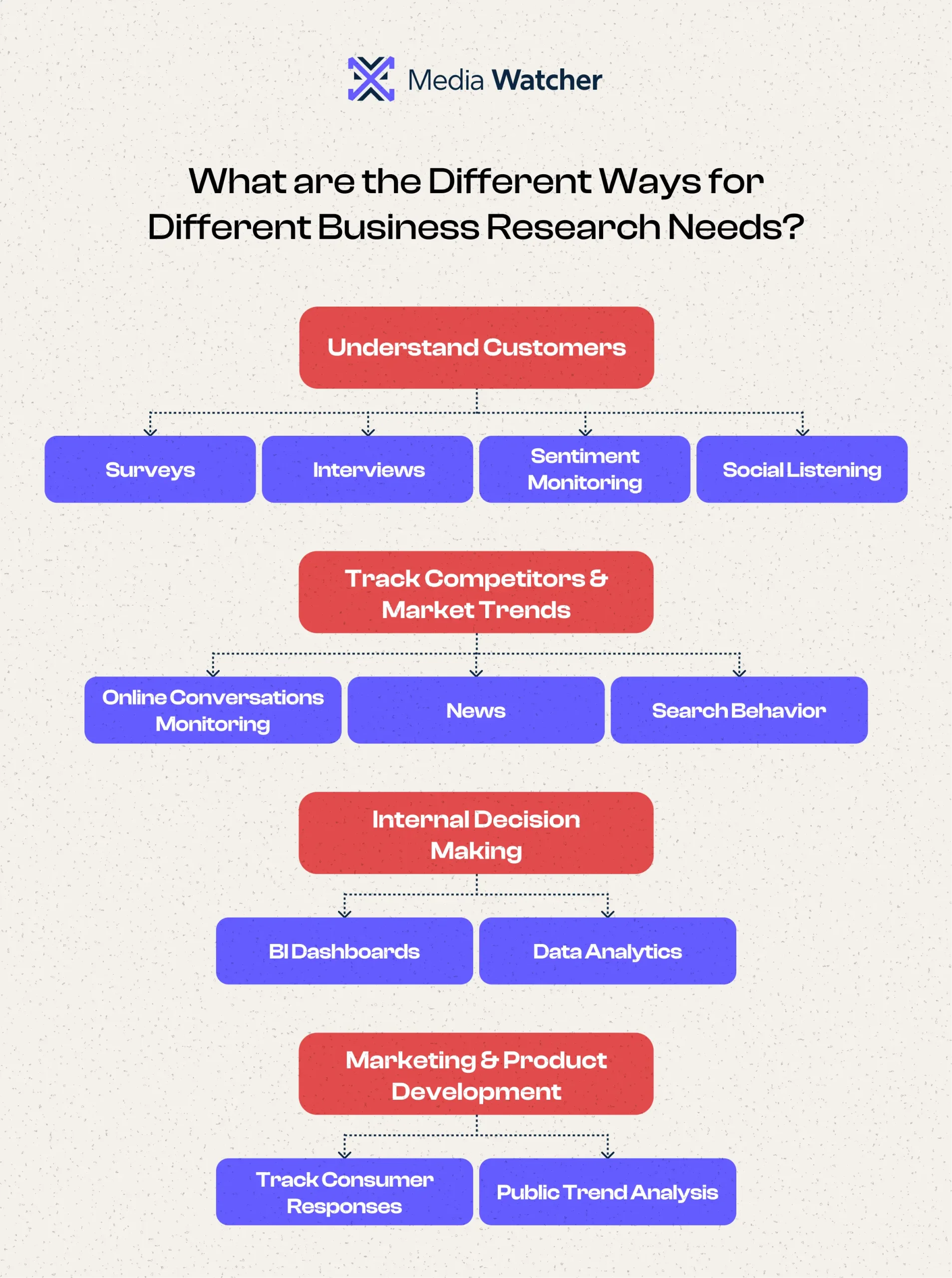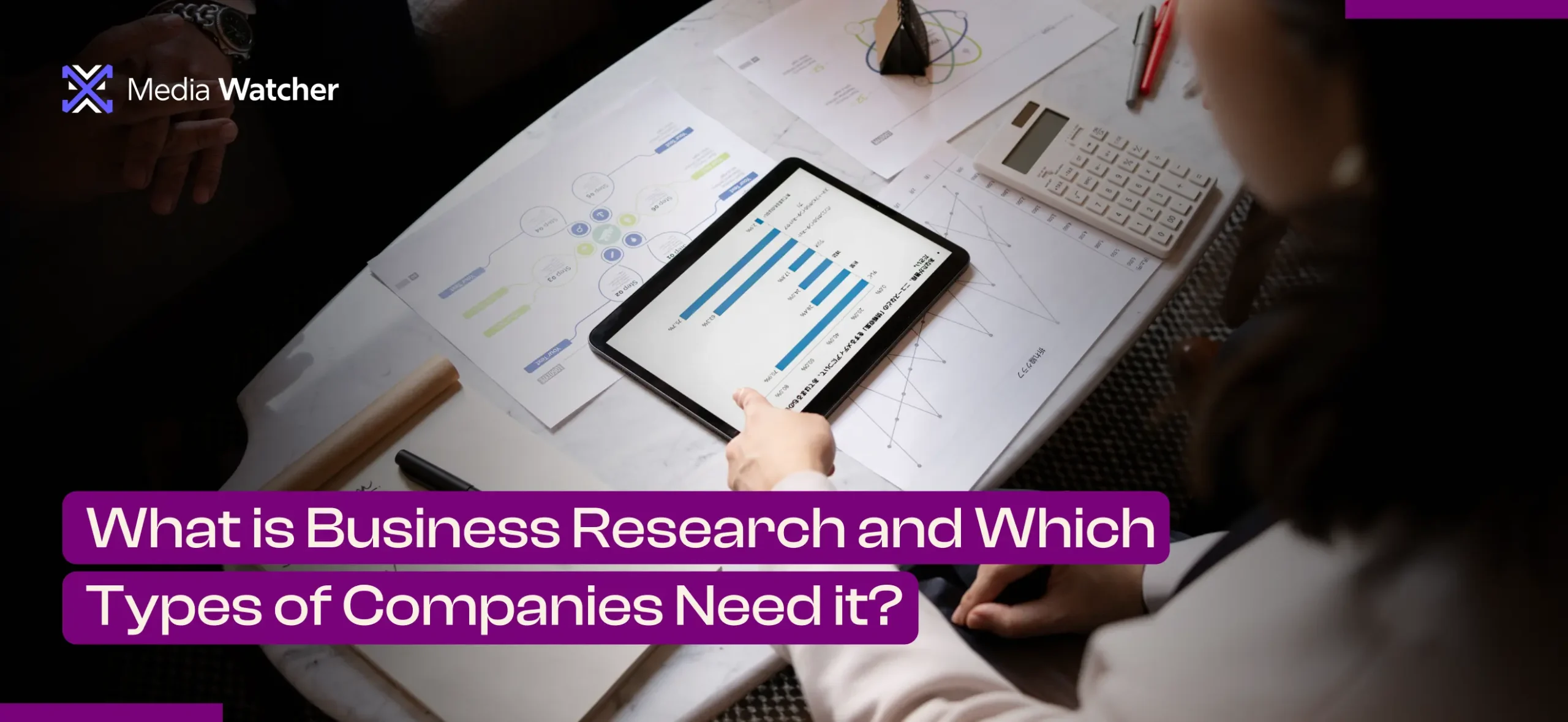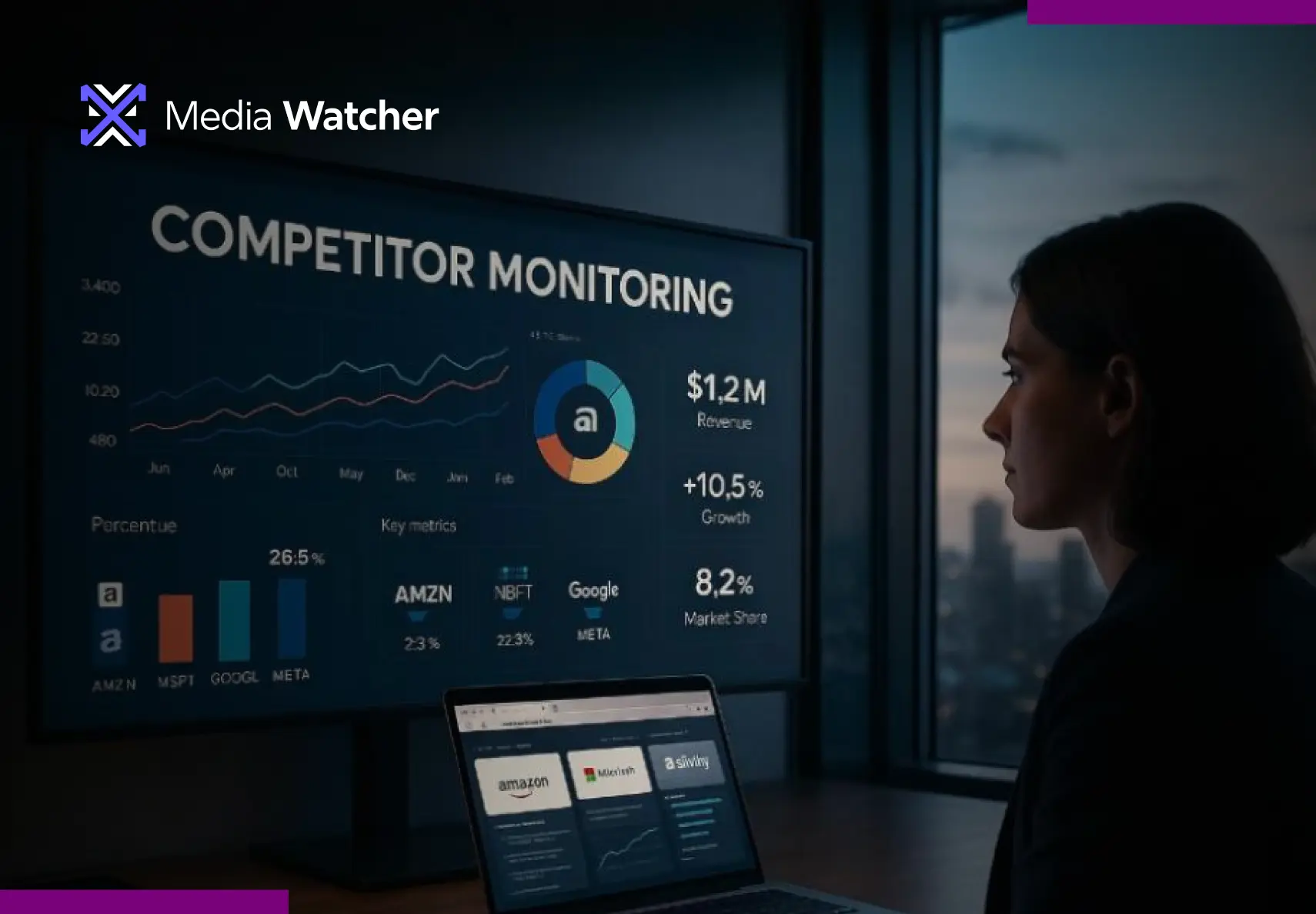Business success in today’s data-driven economy hinges on informed decision-making. According to Fortune Business Insights, the global business intelligence market was valued at USD 31.98 billion in 2024 and is expected to expand from USD 34.82 billion in 2025 to reach USD 63.20 billion by 2032.
As industries become more competitive, businesses are constantly looking for ways to stay ahead of the curve. This is where business research comes in.
It helps companies make better decisions by systematically gathering and analyzing information across all aspects of the organization, from finances and operations to customer preferences and competitor analysis.
It is one of the most useful weapons for gaining a deep understanding of buyer behavior and market trends, helping firms stay up-to-date and competitive.
Whether you’re building a new product, expanding into a new market, or trying to understand why sales dipped last month, business research provides the clarity needed to make the right move at the right time.
But wait..
What is Business Research?
Business research is basically the process of collecting data and information to guide business decisions and solve problems. It is a broad, systematic approach that covers every facet of a company’s operations and environment.
Business research enables decision-makers to base their strategies on evidence rather than guesswork by gathering factual data on customers, competitors, internal processes, or market conditions.
For example, business research involves analyzing publicly available data, surveying customers about their satisfaction, studying industry reports, or observing competitors’ activities.
The goal is to interpret this information to make strategic decisions that improve performance and profitability.
Importantly, it isn’t a one-time task but a continuous monitoring process using business intelligence integrated into successful management.
The Role of Business Intelligence in Business Research
Business Intelligence (BI) is a subset of business research focused on leveraging a company’s internal and external data to inform decision-making. BI is all about turning raw data into actionable insights for the business.
This typically involves specialized software and AI tools that aggregate data from various sources. The main aim is to help organizations and small businesses monitor market performance and identify patterns and trends to guide strategic decisions.
Which Types of Businesses Need Business Research Platforms?
All businesses can benefit from research, but the extent and focus of research might vary by business size, industry, and goals.
The reality is that virtually every type of enterprise needs some form of business research to succeed. Here is a list of companies that need business research platforms.
| Startups | They need business research to verify the market need, along with staying updated with what’s going on in the competitive marketplace. |
| Small and Medium Size Businesses(SMBs) | They use research to understand local markets, pricing, customer satisfaction, and competition. |
| Enterprises | The need for business intelligence is to research to manage risk continuously, plan expansion, forecast performance, and track brand reputation. |
| Fast-Moving Consumer Goods(FMCG) & Retail Sectors | These sectors depend heavily on consumer trends and sentiment. |
| Finance, RegTech, and Healthcare Industry | They use research to forecast demand, manage compliance, and develop new products. |
| Nonprofits & Government | They use business research tools to understand community needs and policy impact. |
And once you understand who relies on business research, the next step is seeing how real brands put these insights into action. One of the examples from FMCG highlights the impact of business research using publicly available data.
How FMCG Brands Use Public TikTok Data for Business Research
Publicly available social data has become one of the strongest signals for consumer demand. FMCG brands also monitor TikTok hashtag spikes, viral creator videos, and comment sentiment to forecast what people will buy next.
Econsultancy highlights that Brands are using TikTok’s publicly available data to inform new product innovation.
Example: Heinz created a limited-edition vodka pasta sauce after a TikTok food trend. This responsiveness helps brands stay relevant, drive awareness, and appeal to their audience.
Therefore, these insights didn’t require paid data sources instead, they leverage publicly available behavior, such as hashtag velocity and viral user-generated content.
What are the Types of Business Research Methods?
Generally, business research methods fall into two types: qualitative and quantitative research.
Qualitative Research
This qualitative research approach relies on a smaller, carefully selected sample to uncover deep insights into consumer motivations, emotions, and preferences. It focuses on understanding the “why” behind customer actions, helping brands decode the reasoning that drives behavior.
Quantitative Research
This method involves collecting and analyzing large volumes of numerical data to identify patterns, trends, and market-wide behaviors. It provides a broader, statistically reliable view of the consumer landscape and helps create focus groups or segments that accurately represent the overall customer base.
Another way to classify business research methods is primary vs. secondary research. Primary research involves gathering new data firsthand through surveys, interviews, and other manual processes.
Whereas secondary research involves analyzing existing information from industry reports, academic studies, or public data.

What are Business Research Tools?
Businesses now rely on a wide mix of tools for research. These tools fall into several categories:
Survey & Feedback Tools
These tools are used to gather customer perception, satisfaction, and needs.
Market Intelligence Databases
The databases help in accessing global industry reports, statistics, and performance benchmarks.
Social Listening & Media Monitoring
Media intelligence helps businesses understand public conversations, track emerging trends, and analyze brand sentiment.
Web Analytics Tools
Software with analytical capabilities is used to analyze website behavior, search patterns, and traffic.
Business Intelligence Platforms
BI works by visualizing data, generating dashboards, and analyzing internal KPIs.
Project-Specific Research Tools
They are used for qualitative analysis, UX research, modeling, and simulations. Moreover, these tools collectively support the full lifecycle of research, starting from data collection to strategic interpretation.
How Media Watcher Serves as an All-in-One Solution for Business Research
If FMCG companies can make million-dollar production decisions from public TikTok data alone, imagine what brands can do when they can view all online signals, news, social sentiment, forums, competitor mentions, reviews, blogs, articles, and media trends in one place.
That is exactly what Media Watcher delivers. The all-in-one solution centralizes:
- Real-time media monitoring
- Trend detection
- Sentiment analysis
- Competitor intelligence
- Public conversation tracking
- Alerts for emerging risks and opportunities
Media watcher is designed for marketing teams, PR professionals, and strategists. The platform enables smarter decision-making without the patchwork of disparate tools.
In conclusion, as business research becomes increasingly complex and vital, having a comprehensive solution like Media Watcher can be a game-changer for brands, startups, SMBs, and the tech industry.
It allows you to replace fragmentation with focus, so you spend less time gathering data and more time leveraging insights.
Instead of juggling surveys, dashboards, Google Trends, social platforms, and manual tracking, Media Watcher becomes one unified command center for business research. Book a demo or contact our team today!




